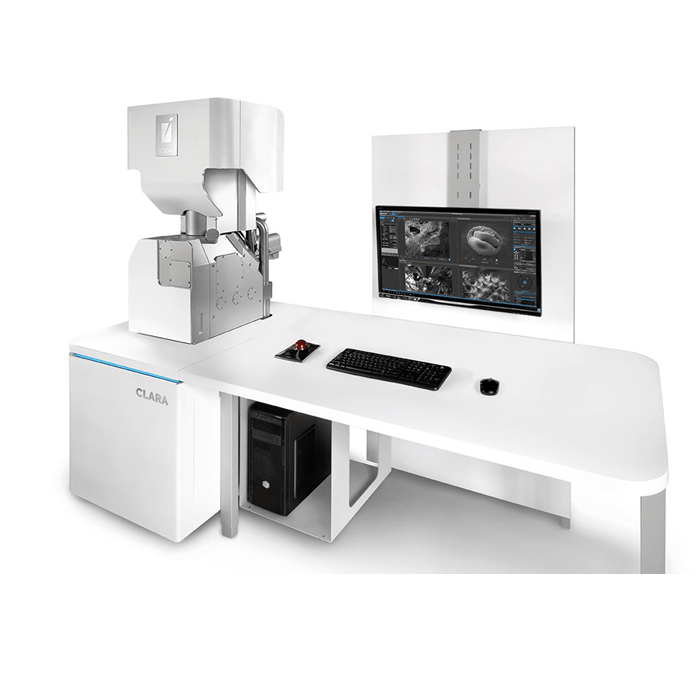
TESCAN CLARA
Electron Microscopy

Introduction
The excellent casting properties of aluminum in combination with easy availability makes aluminum one of the most widely used metals in the world. The combination of light weight and excellent mechanical properties makes aluminum an ideal material for automotive and aeronautical applications as well as more basic uses. Aluminum has very good shaping properties, for example for rolling manufacturing. It is widely used in the food industry as a packaging material and in the building industry for the manufacturing of windows and doors. To enhance it’s material properties, aluminum can be tempered or alloyed by the addition of copper, zinc, magnesium, manganese, or silicon. Another approach is to modify the microstructure by applying one of the processes that induces internal strain such as extrusion, rolling, ECAP, and others.
Equal channel angular pressing (ECAP) is a method using the principle of severe plastic deformation. The bulk material is extruded to create an ultra-fine grain structure. ECAP is a metal forming process which refines grain structure to submicron or to nano grain scale and implements the high strain and superplasticity to the material. Material processed using the ECAP method shows an improvement of the mechanical properties.
ECAP is usually done in multiple steps and it is crucial to track the grain size and the morphology after a certain number of ECAP steps. Electron Backscatter Diffraction (EBSD) gives crystallographic information about sample’s microstructure. This method uses the specific signal in scanning electron microscopy (SEM) which is detected by dedicated EBSD detector. This technique not only provides grain size information; the detected diffraction pattern also enables determination of the phase, crystal orientation, grain morphology and boundaries. Therefore, this SEM based technique is ideal and widely used in many applications and fields from standard metal research and geology to the industrial research in fields of nuclear, automotive, aerospace research and many others.
